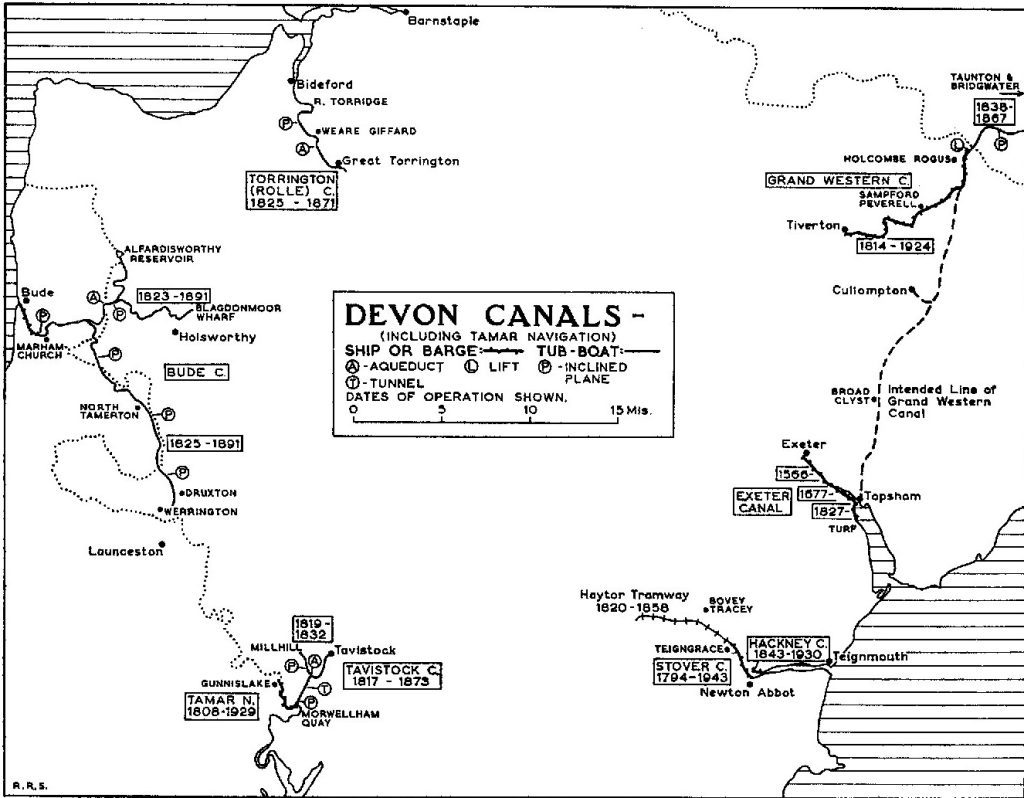
1750-1800: Canal mania
By 1750, Exeter woollen cloth production was declining. Wars cut through trading links and fashion and technology were changing. Cotton textiles from Yorkshire mills were more competitive than cloth from country cottages and small city workshops in Devon. Exeter lacked the money and ambition to compete
There were also problems with silting of the canal, and endless repairs to the locks. In 1754 Exeter Quay was mortgaged to meet costs.

But as inland waterways began to be built elsewhere in England, speculators imagined a network of canals linking the south coast to the Bristol Channel and to the waterways of the Midlands and the North.

Despite rhetoric and public meetings, almost nothing of this web of canals was ever built. Wars brought inflation and disruption of trade, and the public soon lost confidence in the speculators. Some of the preliminary construction work was eventually absorbed into tracks for railways.
Proposed canals
1768 Exeter & Uphill Canal
1792 Bristol & Western Canal
1793 Exeter & Crediton Canal
1793 Public Devonshire Canal
1793 Bude Canal
1794 Bideford, Torrington & Okehampton Canal
1796 Tamar Canal
1796 Grand Western Canal
Topsham to Uphill, near Weston-super-Mare
Taunton to Bristol
Exeter to Crediton
Topsham to Barnstaple, with a branch to Exeter
Bude to River Tamar
Bideford to Okehampton
Tavistock to Okehampton
Topsham to Taunton